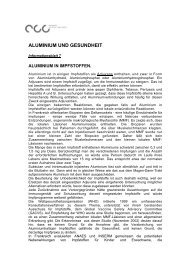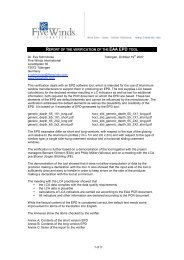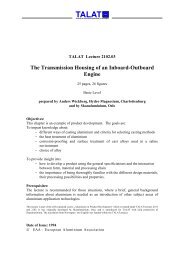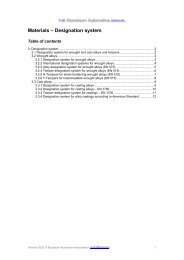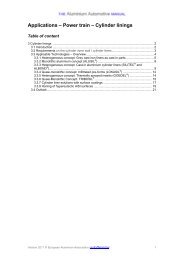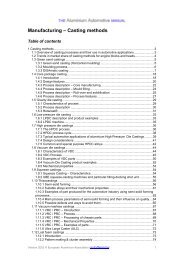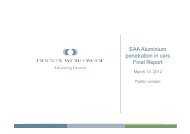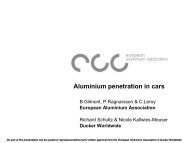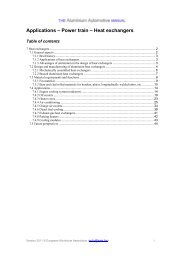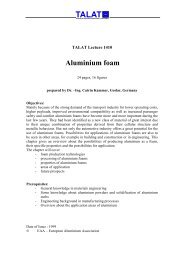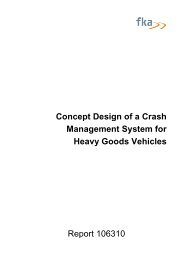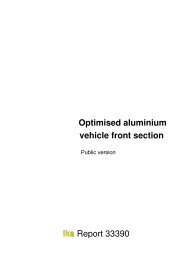aluminium in commercial vehicles - European Aluminium Association
aluminium in commercial vehicles - European Aluminium Association
aluminium in commercial vehicles - European Aluminium Association
Create successful ePaper yourself
Turn your PDF publications into a flip-book with our unique Google optimized e-Paper software.
158 EUROPEAN ALUMINIUM ASSOCIATION ALUMINIUM IN COMMERCIAL VEHICLES CHAPTER XIII<br />
1. Foreword<br />
Repair of <strong>commercial</strong> <strong>vehicles</strong><br />
should be done with the same<br />
care as new construction. In<br />
general, all rules, materials and<br />
methods used for new construction<br />
should also be applied for<br />
repair causes.<br />
Repair is a case-to-case decision,<br />
whether small damaged parts<br />
can be repaired without disassembl<strong>in</strong>g<br />
the structure or<br />
whether damaged components<br />
(plates, extrusions) must be cut<br />
out and replaced completely.<br />
In any case, damages should<br />
never just be “over-welded”.<br />
This method does not reflect a<br />
reasonable way of repair. Any<br />
parts, which have been cut out<br />
due to damages, must always be<br />
replaced with the same type of<br />
alloy as orig<strong>in</strong>ally used. This has<br />
to be applied to ensure a safe<br />
and constant stress deviation<br />
across the vehicle and to prevent<br />
a weaken<strong>in</strong>g of the construction.<br />
It has to be taken <strong>in</strong>to consideration,<br />
that especially tankers or<br />
silo trailers are regarded as pressurized<br />
vessels under the<br />
Inside view of a repaired <strong>alum<strong>in</strong>ium</strong> tank (Feldb<strong>in</strong>der)<br />
<strong>European</strong> Pressure Vessel<br />
Regulation 97/23/EU. This<br />
requires additional test<strong>in</strong>g<br />
methods for repairs and supervision<br />
by certified supervision<br />
bodies (like TÜV).<br />
Repair should therefore be carried<br />
out by the manufacturer of<br />
the orig<strong>in</strong>al vehicle or <strong>in</strong> certified<br />
repair workshops: qualified<br />
welders, work<strong>in</strong>g methods<br />
accord<strong>in</strong>g to state-of-the-art<br />
technologies, suitable work<br />
organisation, etc. are necessary.



